
Vi KronobergsVävare
The profile challenge 2012
Some of our pages are translated to English:
- rackel weave, or three-treadle weave
- blanket brushing
- winding a warp with a warping glove
- In the bower (exhibition '05)
- Bags
- Bags exhibition '10
- Rugs
- Index with (some) translations
- Links
Trensaflossa is a special variety of flossa, woven only in Skåne during a fairly short period (about 1789-1850).
The technique can also be called half flossa - areas of knotted pile contrasts with areas without pile.
Marianne and Eivor had brought examples of both trensaflossa, flossa, woven and stitched rya. To the right is Marianne's first sample of trensaflossa, designed by her daughter many years ago.
The history of flossa is very long - there are finds from the Nordic Bronze Age (Denmark), but also
from ancient Egypt and Persia.
In Sweden it was probably first used instead of sheep skins - the rya is common along all Swedish
coasts, and could often be found in fishing boats. In the bed it was used as a bedspread, used with the
pile downwards. In Uppland it was often woven with a decorative, er, back? (which was uppermost),
often with a diamond twill. The Uppland rya was called "kavring".
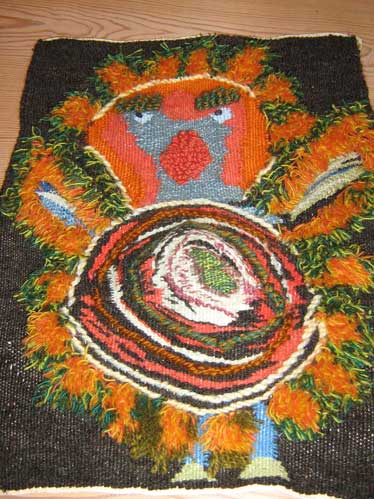
The etymology of flossa is "long loose pile", while rya has the same root as English rough.
It can either be woven - the knots are made on the loom, with some (tabby) picks between the knot rows -
or it can be sewn (stitched?) - you start with a ready-woven "bottom" and stitch the knots.
During certain periods it has been very popular to get rya kits.
The popularity of the rya has varied over the centuries. To begin with it was
used as a "fake fur" to use in the bed. During our time it has more often lived on the floor -
very popular in the 1950-60'ies. Now it has a renaissance - ryas are very popular in second-hand shops and
flea markets.
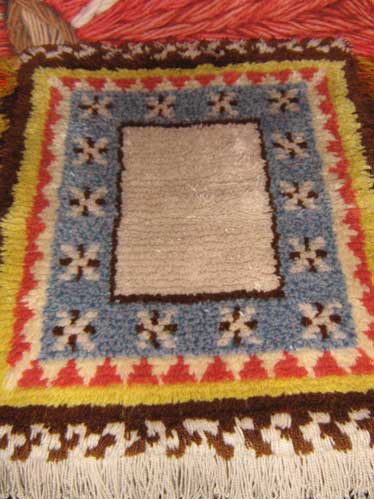
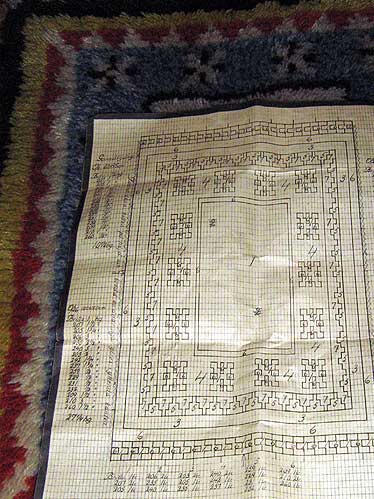
To get pile of the same length, you can use a ... (in Swedish: kavel). Look closely at the
picture, and you can see a groove in the edge. The groove is to help steer the scissors when
cutting the pile.
There are several different knots possible - symmetrical, assymetrical and "snared".
In, for instance, the book Nock, ragg, rya there are good explanations of different knots.
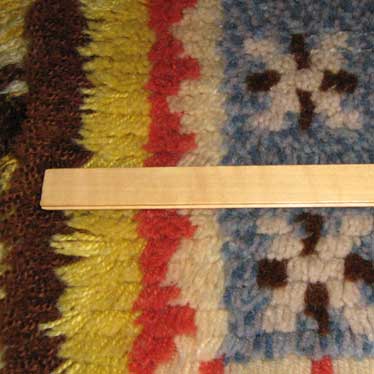
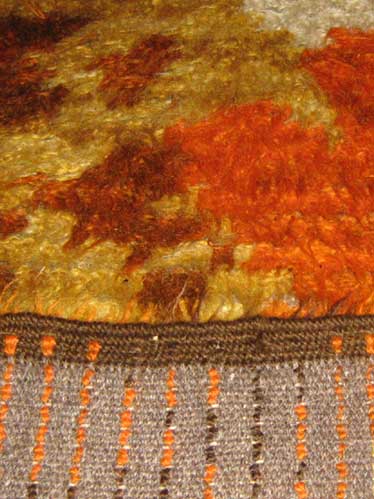
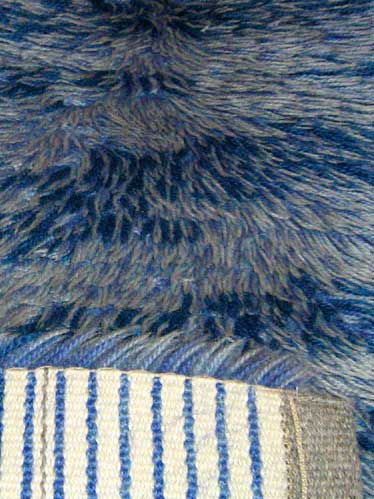
Some time ago Eivor wove many squares in different techniques. Below an example with uncut half flossa. The knots are very, very tiny.
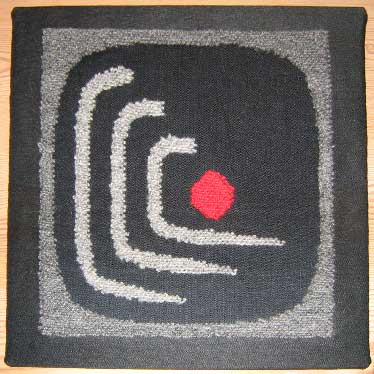
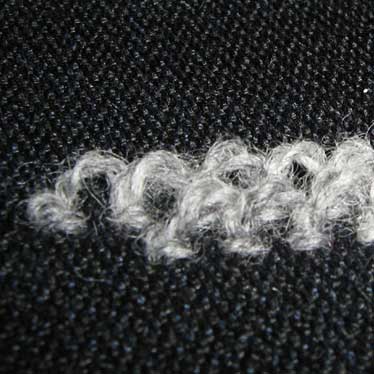
-
Nock, ragg, rya : det glänser om ullen
Örebro : Fören. Sveriges hemslöjdskonsulenter UllMa, 2001
ISBN 91-631-1207-8 (inb) -
Den åländska ryan
Mariehamn : Ålands Marthadistrikts hemslöjdssektion, 1996
ISBN 951-8946-9 -
Trensaflossa (see picture)
Hemslöjden Malmöhus 1997 - Vävmagasinet 2001/4
- Vävmagasinet 2002/1
- Land 1991/3
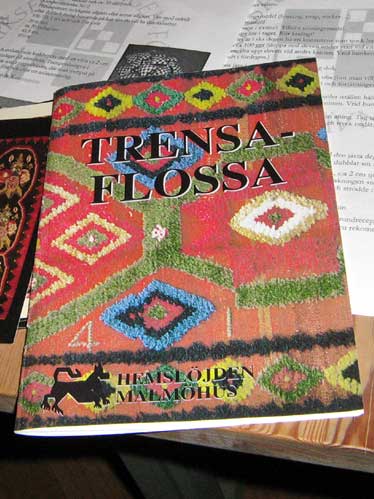
www.riksvav.se/kronobergsvav/